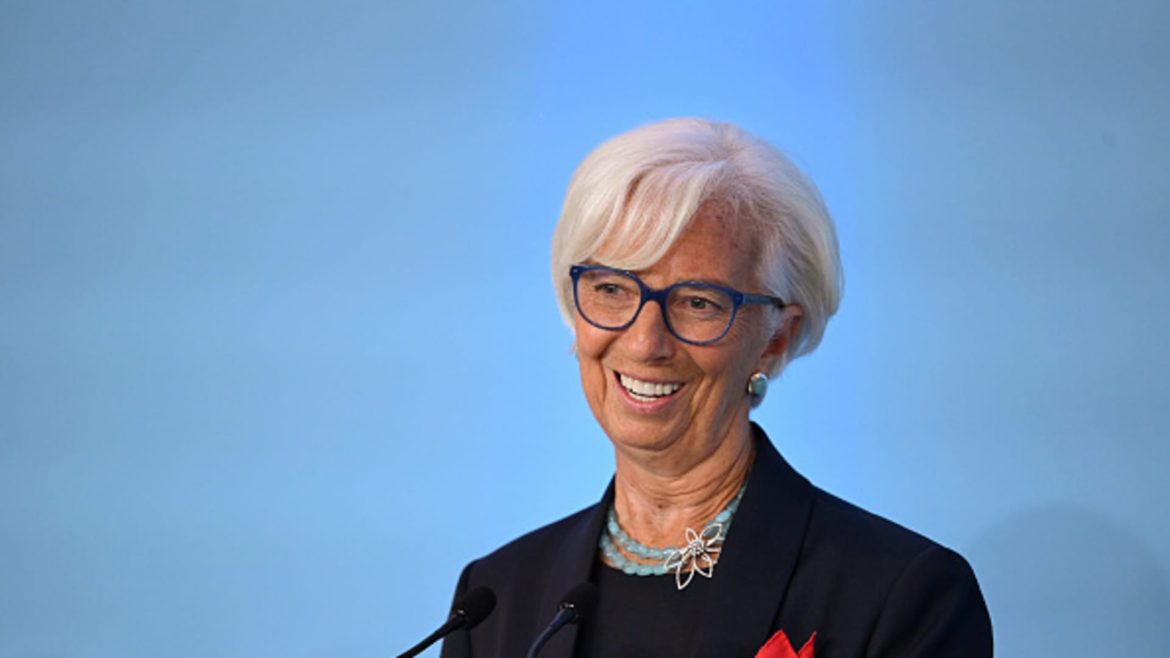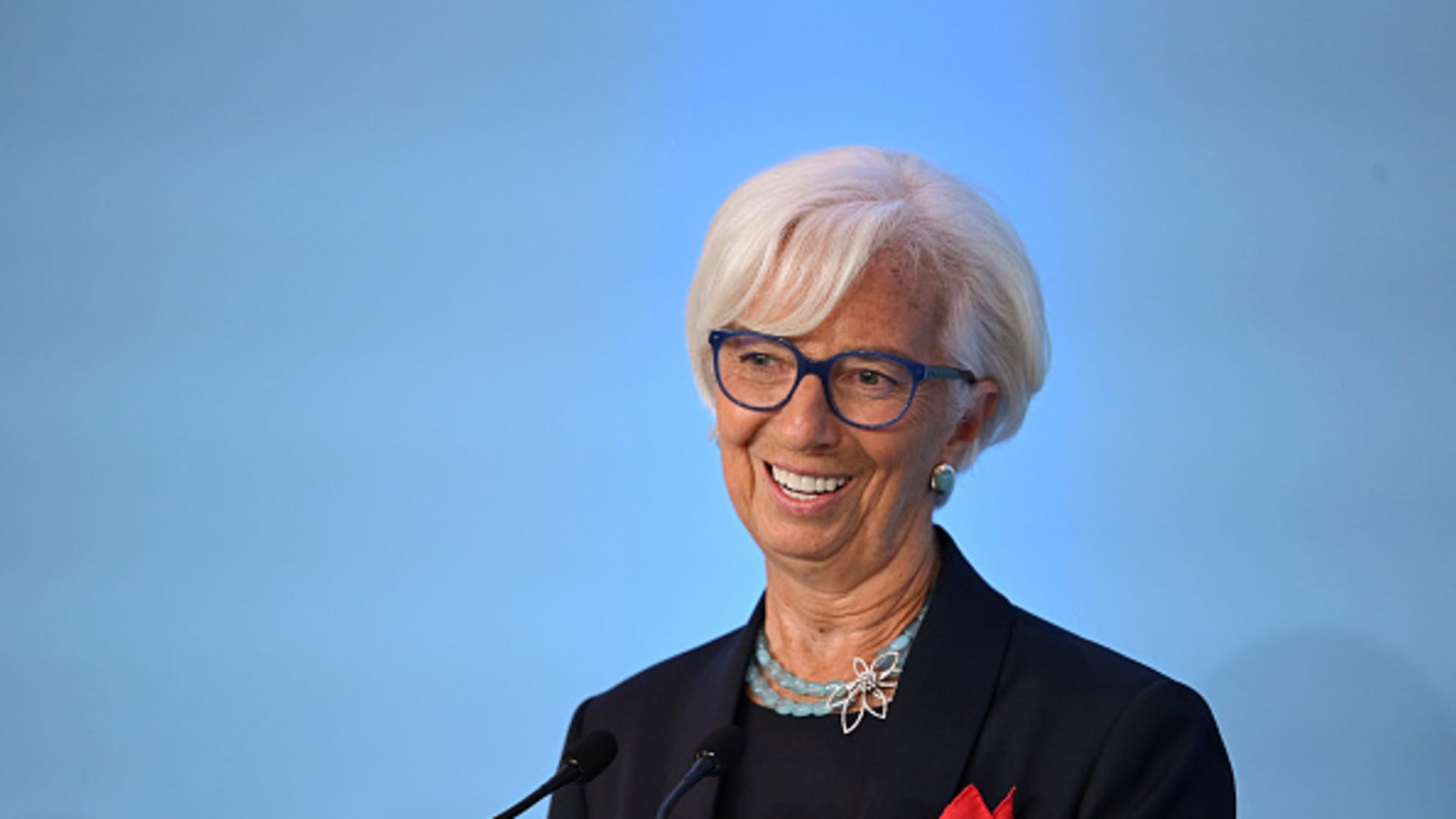The ECB’s Strategic Pause: Balancing Trade Tensions and Economic Stability
The European Central Bank’s (ECB) decision to maintain its key interest rate at 2.00% marks a pivotal moment in the Eurozone’s economic trajectory. This pause, following seven consecutive rate cuts, underscores the ECB’s cautious approach amid escalating trade tensions with the United States. The move reflects a delicate balancing act between fostering economic growth and mitigating the potential fallout from transatlantic trade disputes.
The Rate Cut Hiatus: A Strategic Shift
The ECB’s decision to hold rates steady is not a sign of economic optimism but a calculated response to the uncertainty surrounding U.S. tariffs. This “wait-and-see” approach allows policymakers to assess the potential impact of trade disputes on the Eurozone economy. The ECB’s strategy is to avoid premature action that could exacerbate economic instability.
The ECB’s pause also provides an opportunity to evaluate the effectiveness of previous rate cuts. By maintaining the current rate, policymakers can gauge the real-time impact of monetary policy on economic indicators such as inflation, employment, and consumer confidence. This data-driven approach ensures that any future rate adjustments are based on concrete evidence rather than speculative assumptions.
The Tariff Threat: A Looming Economic Challenge
The primary driver behind the ECB’s cautious stance is the uncertainty surrounding potential U.S. tariffs on European goods. The threat of tariffs poses a significant risk to the Eurozone’s economic outlook, with potential consequences including:
- Reduced Exports: Higher tariffs would make European goods more expensive in the U.S. market, potentially leading to a decline in exports. This could have a ripple effect on industries reliant on transatlantic trade, such as automotive, aerospace, and luxury goods.
- Supply Chain Disruptions: Tariffs could disrupt global supply chains, forcing European businesses to find alternative suppliers or adjust production processes. This could lead to increased costs and inefficiencies, ultimately affecting the competitiveness of European products.
- Economic Slowdown: A combination of reduced exports and supply chain disruptions could dampen economic activity in the Eurozone. This could lead to slower growth and potentially even a recession, further complicating the ECB’s monetary policy decisions.
- Inflationary Pressures: While the ECB currently assesses inflationary pressures as easing, tariffs could counteract this trend by making imported goods more expensive. This could lead to higher prices for consumers, eroding purchasing power and potentially dampening economic activity.
The magnitude of these impacts will depend on the scope and severity of the tariffs imposed. While EU officials have been attempting to negotiate with the U.S. to mitigate the potential damage, the outcome remains uncertain.
Inflationary Pressures and the Strong Euro: Additional Considerations
While the tariff threat is the most prominent factor influencing the ECB’s decision, other considerations also play a role. Inflation in the Eurozone has been relatively stable, hovering around the ECB’s 2% target. This provides the central bank with some flexibility in its monetary policy decisions. However, the potential for tariffs to reignite inflationary pressures remains a concern.
Another factor to consider is the strength of the euro. A strong euro can make Eurozone exports more expensive and imports cheaper, potentially exacerbating the negative impact of tariffs on the trade balance. The ECB must carefully monitor the exchange rate to ensure it does not undermine the effectiveness of its monetary policy.
Potential Future Actions: Navigating an Uncertain Landscape
Given the complex and uncertain economic environment, it is difficult to predict the ECB’s future actions with certainty. Several scenarios are possible:
- Scenario 1: Trade Tensions Ease: If the U.S. and the EU reach a trade agreement that avoids the imposition of significant tariffs, the ECB may resume its rate-cutting cycle in an attempt to stimulate economic growth. This scenario would likely be met with positive market reactions, as it would signal a more favorable economic outlook.
- Scenario 2: Tariffs Imposed, Limited Impact: If tariffs are imposed but their impact on the Eurozone economy is deemed manageable, the ECB may choose to maintain its current policy stance. This would allow the central bank to monitor the situation closely and adjust its approach as needed. The ECB could also consider implementing targeted measures to support specific sectors affected by the tariffs.
- Scenario 3: Tariffs Imposed, Significant Impact: If tariffs are imposed and have a significant negative impact on the Eurozone economy, the ECB may be forced to take further action. This could include implementing additional rate cuts or launching new stimulus measures, such as quantitative easing or targeted liquidity provisions. The ECB could also consider coordinating with other central banks to mitigate the global impact of the tariffs.
The ECB’s future actions will ultimately depend on a careful assessment of the evolving economic situation and the impact of trade policies on the Eurozone. The central bank must remain agile and adaptable, ready to adjust its strategy as new information becomes available.
The Global Context: A Diverging Monetary Policy Landscape
The ECB’s decision to hold rates steady comes at a time when other central banks around the world are pursuing different monetary policy paths. Some central banks, like those in Europe, are continuing to cut rates in an effort to stimulate their economies. In contrast, the U.S. Federal Reserve is constrained by tariffs and other geopolitical factors, leading to a more cautious approach.
This divergence in monetary policy highlights the challenges facing central banks in an increasingly interconnected global economy. The ECB must navigate these complexities while ensuring that its policies align with the Eurozone’s unique economic circumstances. The central bank must also consider the potential spillover effects of its decisions on other economies, particularly those with close trade ties to the Eurozone.
A Call for Caution: Steering Through Troubled Waters
The ECB’s decision to pause its rate-cutting cycle reflects the complex challenges facing the Eurozone economy. While the threat of U.S. tariffs looms large, the central bank must also consider other factors, such as inflation and the strength of the euro. Navigating this uncertain landscape will require a delicate balancing act and a willingness to adapt to changing circumstances.
The ECB’s cautious approach underscores the importance of data-driven decision-making and strategic foresight. By carefully assessing the potential impact of trade policies and other economic factors, the ECB can ensure that its monetary policy remains effective and aligned with the Eurozone’s long-term economic goals. The central bank must also maintain open lines of communication with other policymakers, both within the Eurozone and internationally, to coordinate efforts and mitigate the risks associated with trade tensions.
In conclusion, the ECB’s strategic pause is a testament to the central bank’s commitment to economic stability and prudent policymaking. As the Eurozone navigates the complexities of global trade and monetary policy, the ECB’s cautious approach provides a solid foundation for sustainable economic growth. The central bank’s ability to adapt to changing circumstances and make informed decisions will be crucial in steering the Eurozone through these troubled waters.





